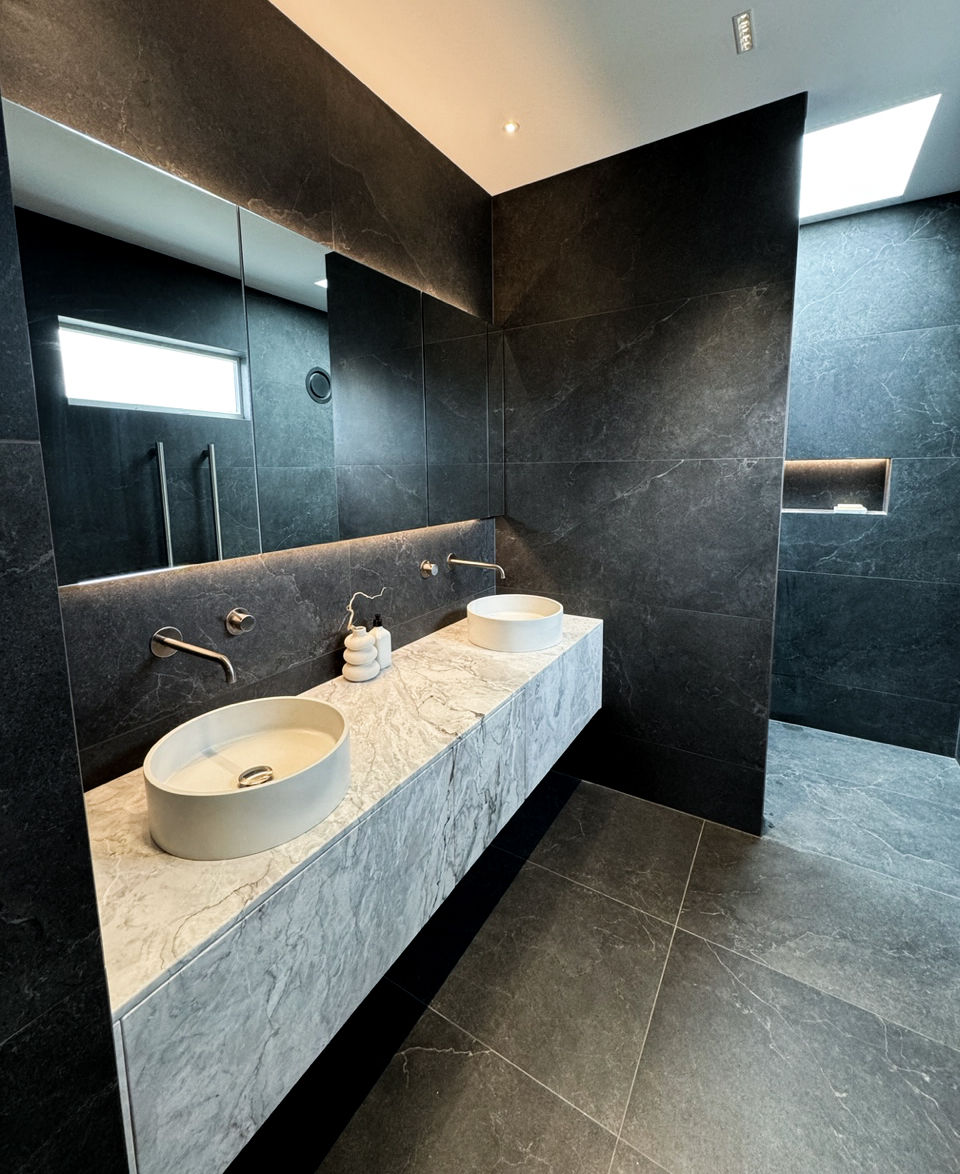Why Waterproofing Matters: A Tiler’s Guide to NZ Building Code E3/AS1
- WellingtonTilers Ltd
- May 6
- 2 min read
When you think about bathroom renovations, the first things that come to mind might be tiles, vanities, or shower screens. But the unsung hero of any long-lasting wet area? Waterproofing.
Done right, it prevents costly leaks, protects your home’s structure, and ensures your renovation stands the test of time.
At Wellington Tilers, we follow New Zealand's Building Code Clause E3/AS1 and the Code of Practice for Internal Wet Area Membrane Systems to make sure every wet area is built to last.
What is Clause E3/AS1?
Clause E3 of the NZ Building Code focuses on Internal Moisture. The goal is to make sure that water from showers, baths, and laundry areas doesn’t end up damaging your walls, floors, or framing. The E3/AS1 Acceptable Solution gives detailed guidance for meeting this requirement.

Some key points from E3/AS1:
Shower walls must be waterproofed to at least 1800mm above the floor.
Adjacent walls (like beside a bath or basin) should be waterproofed to at least 150mm above the surface.
The entire floor area in a shower or wet room must be waterproofed, and membrane should extend at least 25mm past the wet zone boundary.
Surfaces must be easy to clean and water-resistant.

The Code of Practice for Internal Wet Area Membranes
This industry-backed document (developed by Waterproofing Membrane Association NZ) provides best-practice guidelines for applying membranes correctly. It's essential reading for anyone applying waterproofing membranes in wet areas.
Some of the recommended practices include:
Membranes must be installed by trained professionals using BRANZ-appraised or CodeMark-certified systems.
Junctions between floors and walls must be fully sealed with upturns of at least 75mm.
Corners must be reinforced with fabric banding or detailing tape.
Waterproofing must be applied before any tiling in the wet area.
Why You Should Hire a Professional Tiler for Waterproofing
DIY waterproofing is not recommended for most homeowners. Waterproofing failures are one of the most common and expensive reasons for building claims in New Zealand.

At Wellington Tilers, we:
Are certified waterproofers and work alongside licensed applicators when required
Use compliant membrane systems
Provide a PS3 (Producer Statement – Construction) for waterproofing when applicable
Ensure the installation meets or exceeds E3/AS1 and Code of Practice guidelines
Ready for a Leak-Free Bathroom?
Whether you're renovating or building new, get in touch with Wellington Tilers for expert tiling and waterproofing. We follow the rules so your home stays safe, dry, and beautiful.



Comments